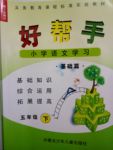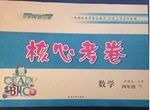题目内容
BEIJING, China ---Pollution in China remains very serious as the country's rapid economic growth brings new environmental problems, a minister said Saturday.
Vice Environment Minister Zhang Lijun said China has made progress on environmental protection, but admitted that its rapid economic growth over the past decade has had a negative effect on the environment.
"Our rapid economic development has continuously brought our country new environmental problems, particularly dangerous chemicals, electronic waste and so on. These environmental pollutants (污染物) bring new problems and affect human health," Zhang told a news conference.
He said that emissions(排放)of traditional pollutants remain high and some areas have failed to meet government standards.
China has pledged to continue reducing emissions this year of three key air pollutants--- ammonia nitrogen, sulfur dioxide and nitrogen oxide. The government has also promised to bring down demand for chemical oxygen---a measure of water pollution by l.5 percent from the 2010 levels.
In the last five years, there were 912 "environmental emergencies" involving heavy metal pollution, including several well-publicized instances of mass contamination, Zhang said. Thousands of children were affected by lead poisoning in several provinces in 2009 and 2010 because they lived near metal smelters or battery factories.
The minister noted that rapid development in the next five years would increase the need for China to improve environmental protection and shift to a more sustainable(可持续的) model of economic development from its dependence on industries which consume huge quantities of energy.
China is focusing on clean energy, including solar, wind and nuclear power, as one way to reduce its dependence on coal, which generates three-quarters of its electricity and is also used for winter heating in northern cities. China also hopes the strategy will reduce its demand for oil and gas and increase economic growth and jobs.
Zhang told reporters there was no plan to adjust China's overall strategy for nuclear development but he said Beijing will learn lessons from Japan after a violent earthquake resulted in a radioactive leak(放射能泄露).
"Some lessons we learn from Japan will be considered in the making of China's nuclear power plans," he said. "But China will not change its determination and plan for developing nuclear power."
1.How can China do to solve the pollution problem according to the minister?
A. China must slow its economic development.
B. China require to ask industries to meet government standards.
C. China should tell people how to protect the environment.
D. China require to transform tis economic development model.
2.What is the meaning of the underlined word "generates" in Paragraph 6?
A. needs
B. transports
C. reduces
D. produces
3.Which of the following is true according to the passage?
A. Dangerous chemicals are one of the traditional pollutants.
B. The use of clean energy will help increase job opportunities.
C. Coal is used more in northern cities than in southern cities.
D. Rapid economic growth helps to improve the environment.
4.What do the last four paragraphs mainly talk about?
A. China’s economic development will shift to depend on clean energy.
B. China will learn to use nuclear power from Japan.
C. Japan had a violent earthquake recently.
D. Rapid economic growth caused some problems in China.
 小学学习好帮手系列答案
小学学习好帮手系列答案 小学同步三练核心密卷系列答案
小学同步三练核心密卷系列答案
